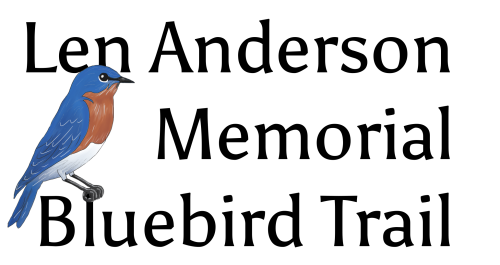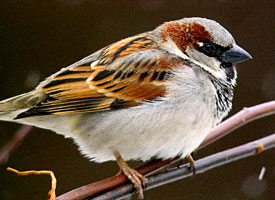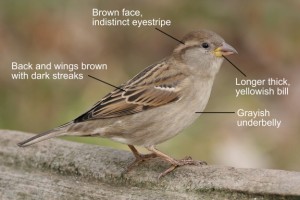If you keep up with our group, and the escapades of Bluebird Nest Box monitoring, you will know that House Sparrows (Passer domesticus) are a major problem. This invasive species will not only take over a box, but also kill nestlings and adults of other species.
While out checking boxes, I had to remove a House Sparrow nest and a passerby asked what I was doing. After explaining what our organization was, and how I was managing invasive species, they asked how I could tell that the bird that used the box was a House Sparrow. Most people have seen the male House Sparrow, and can easily identify it by their gray heads, white cheeks, a black bib, and rufous neck, but the bird that flew from the box was a female.
I explained to them that the female is very similar to other female species; House Finch (Haemorhous mexicanus) and Purple Finch (Haemorhous purpureus) females can easily be confused with them, but the nest in the box is constructed with all sorts of grass and trash, which is indicative of House Sparrows. I also gave a quick summary of the markings that distinguish the competitor from the other species, and I thought I would give them to our readers as well.
Below are comparison photos of the three species with specific markings to look for.
As you can see, the House Sparrow is more plain, with darker markings on the back and wings, and has a yellowish beak that is slightly longer. For the skilled birder, you are able to identify these birds in flight, but for the average bird feeder owner, this comparison may help you identify who is eating all your seed. It is also recommended to use “black-oil sunflower”, and avoid inexpensive mixed seed with millet & cracked corn, sparrows don’t like to open the sunflower shell.
If you still have difficulty telling them apart, don’t fret; practice makes perfect and when in doubt, wait. When ever you see a female bird near a box or feeder, you can almost bet the male (easier to id) is not to far away.





